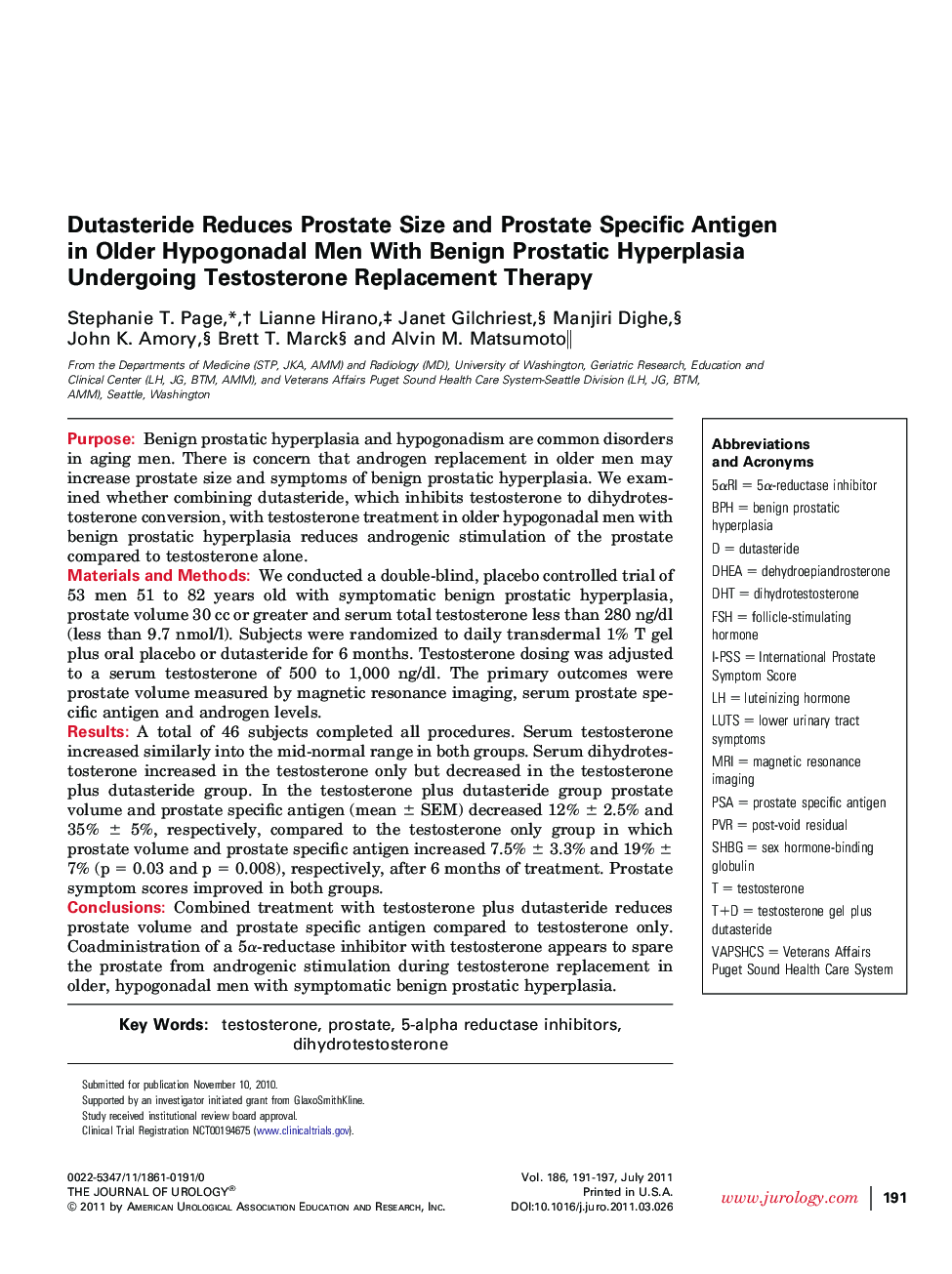| Article ID | Journal | Published Year | Pages | File Type |
|---|---|---|---|---|
| 3865803 | The Journal of Urology | 2011 | 7 Pages |
PurposeBenign prostatic hyperplasia and hypogonadism are common disorders in aging men. There is concern that androgen replacement in older men may increase prostate size and symptoms of benign prostatic hyperplasia. We examined whether combining dutasteride, which inhibits testosterone to dihydrotestosterone conversion, with testosterone treatment in older hypogonadal men with benign prostatic hyperplasia reduces androgenic stimulation of the prostate compared to testosterone alone.Materials and MethodsWe conducted a double-blind, placebo controlled trial of 53 men 51 to 82 years old with symptomatic benign prostatic hyperplasia, prostate volume 30 cc or greater and serum total testosterone less than 280 ng/dl (less than 9.7 nmol/l). Subjects were randomized to daily transdermal 1% T gel plus oral placebo or dutasteride for 6 months. Testosterone dosing was adjusted to a serum testosterone of 500 to 1,000 ng/dl. The primary outcomes were prostate volume measured by magnetic resonance imaging, serum prostate specific antigen and androgen levels.ResultsA total of 46 subjects completed all procedures. Serum testosterone increased similarly into the mid-normal range in both groups. Serum dihydrotestosterone increased in the testosterone only but decreased in the testosterone plus dutasteride group. In the testosterone plus dutasteride group prostate volume and prostate specific antigen (mean ± SEM) decreased 12% ± 2.5% and 35% ± 5%, respectively, compared to the testosterone only group in which prostate volume and prostate specific antigen increased 7.5% ± 3.3% and 19% ± 7% (p = 0.03 and p = 0.008), respectively, after 6 months of treatment. Prostate symptom scores improved in both groups.ConclusionsCombined treatment with testosterone plus dutasteride reduces prostate volume and prostate specific antigen compared to testosterone only. Coadministration of a 5α-reductase inhibitor with testosterone appears to spare the prostate from androgenic stimulation during testosterone replacement in older, hypogonadal men with symptomatic benign prostatic hyperplasia.
